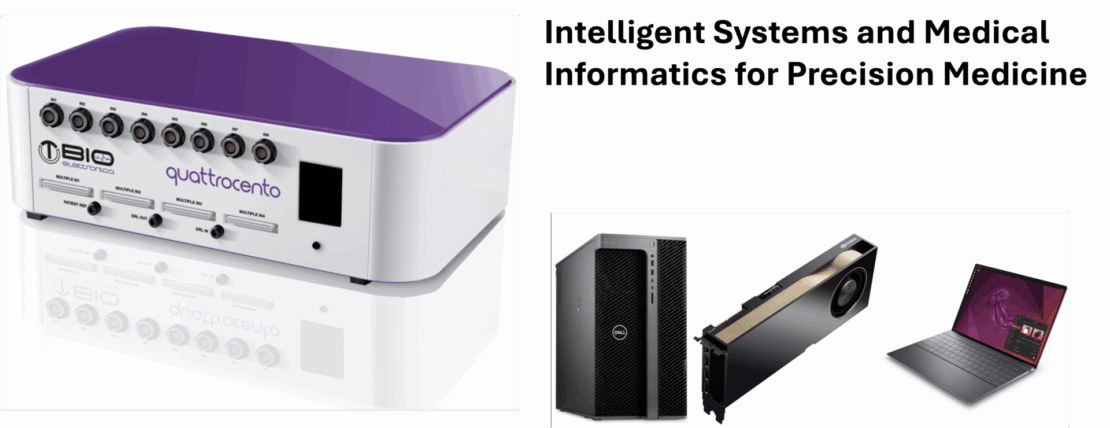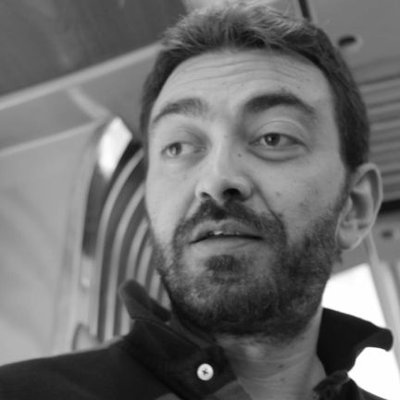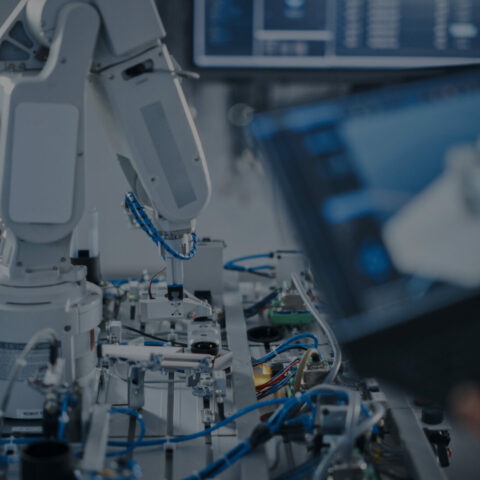
Location: DEI – Politecnico di Bari
Lab head: Prof. Antonio Brunetti
Contact: antonio.brunetti@poliba.it
Lab Team

Antonio Brunetti
Ricercatore
Politecnico di Bari

Adnan Rashid
Ricercatore
Politecnico di Bari

Daniele Di Mascolo
Ricercatore
Politecnico di Bari

Domenico Buongiorno
Ricercatore
Politecnico di Bari

Vitoantonio Bevilacqua
Professore Ordinario
Politecnico di Bari

Gian Maria Zaccaria
Ricercatore
Politecnico di Bari

Nicola Altini
Ricercatore
Politecnico di Bari

Stefano Mazzoleni
Professore Associato
Politecnico di Bari

Elena Sibilano
Ricercatore
Politecnico di Bari
Lab Mission
The lab will include a complete facility for designing, developing and testing bioinformatics pipelines for genomic data analysis in order to extract biomarkers able to predict prognostic and therapy outcomes due to pathological conditions; such pipelines would allow the processing of sequenced data coming from multiple services. Integrating biomarkers with features extracted from bioimages, biosignals and biodata, would be also possible to better characterize the referral clinical condition (radiomics and radiogenomics), to monitor it over time and customize the therapeutic approach, according to the Precision Medicine paradigm.
Link: https://labinfind.poliba.it/ricerca-scientifica/pnrr/brief/ismi4pm/
Scientific Publications
Brunetti, A., Buongiorno, D., Altini, N., Bevilacqua, V. Enabling Technologies for Optimized Diagnosis, Therapy and Rehabilitation: Obtained Results and Future Works. In: Bochicchio, M., Siciliano, P., Monteriù, A., Bettelli, A., De Fano, D. (eds) Ambient Assisted Living. ForItAAL 2023. Lecture Notes in Bioengineering. Springer, Cham. doi: 10.1007/978-3-031-63913-5_19
Altini, N., Rossini, M., Turkevi-Nagy, S., Pesce, F., Pontrelli, P., Prencipe, B., Berloco, F., Seshan, S., Gibier, J. B., Dorado, A. P., Bueno, G., Peruzzi, L., Rossi, M., Eccher, A., Li, F., Koumpis, A., Beyan, O., Barratt, J., Huy Quoc, V., Mohan, C., Van Nguyen, H., Cicalese, P. A., Ernst, A., Gesualdo, L., Bevilacqua, V., Becker, J. U. Performance and Limitations of a Supervised Deep Learning Approach for the Histopathological Oxford Classification of Glomeruli with IgA Nephropathy. Computer Methods and Programs in Biomedicine, 2023, p.107814. doi: 10.1016/j.cmpb.2023.107814
Gentile, E., Brunetti, A., Ricci, K., Vecchio, E., Santoro, C., Sibilano, E., Bevilacqua, V., Iliceto, G., Craighero, L., de Tommaso, M. Effects of movement congruence on motor resonance in early Parkinson’s disease. Scientific Reports, 2023, 13(1), p.14887. doi: 10.1038/s41598-023-42112-2
Prencipe, B., Delprete, C., Garolla, E., Corallo, F., Gravina, M., Natalicchio, M. I., Buongiorno, D., Bevilacqua, V., Altini, N., Brunetti, A. An Explainable Radiogenomic Framework to Predict Mutational Status of KRAS and EGFR in Lung Adenocarcinoma Patients. Bioengineering. 2023; 10(7):747. doi: 10.3390/bioengineering10070747
Sibilano, E., Brunetti, A., Buongiorno, D., Lassi, M., Grippo, A., Bessi, V., Micera, S., Mazzoni, A., Bevilacqua, V. An attention-based deep learning approach for the classification of subjective cognitive decline and mild cognitive impairment using resting-state EEG. J Neural Eng. 2023 Feb 6. doi: 10.1088/1741-2552/acb96e.
Suglia, V., Brunetti, A., Pasquini, G., Caputo, M., Marvulli, T. M., Sibilano, E., Della Bella, S., Carrozza, P., Beni, C., Naso, D., Monaco, V., Cristella, G., Bevilacqua, V., Buongiorno, D. A Serious Game for the Assessment of Visuomotor Adaptation Capabilities during Locomotion Tasks Employing an Embodied Avatar in Virtual Reality. Sensors. 2023; 23(11):5017 doi: 10.3390/s23115017
Zaccaria G.M., Berloco, F., Buongiorno, D., Brunetti, A., Altini, N., Bevilacqua, V. A time-dependent explainable radiomic analysis from the multi-omic cohort of CPTAC-Pancreatic Ductal Adenocarcinoma. Computer Methods and Programs in Biomedicine, 2024, p.108408. doi: 10.1016/j.cmpb.2024.108408
Sibiliano, E., Buongiorno, D., Lassi, M., Grippo, A., Bessi, V., Sorbi, S., Mazzoni, A., Bevilacqua, V., Brunetti, A. Understanding the Role of Self-Attention in a Transformer Model for the Discrimination of SCD From MCI Using Resting-State EEG, 2024, 28(6):3422-3433. doi:110.1109/JBHI.2024.3390606
Berloco, F., Marvulli, P.M., Suglia, V., Colucci, S., Pagano, G., Palazzo, L., Aliani., M., Castellana, G., Guido, P., D’Addio, G., Bevilacqua, V. Enhancing Survival Analysis Model Selection through XAI(t) in Healthcare. Applied Sciences, 2024, 14(14), 6084. doi: 10.3390/app14146084
Clemente, L., La Rocca, M., Paparella, G., Delussi, M., Tancredi, G., Ricci, K., Procida, G., Introna, A., Brunetti, A., Taurisano, P., Bevilacqua, V., de Tommaso, M. Exploring Aesthetic Perception in Impaired Aging: A Multimodal Brain—Computer Interface Study, 2024, Sensors, 24(7), 2329. doi: 10.3390/s24072329
Berloco, F., Zaccaria G.M., Altini, N., Colucci, S., Bevilacqua, V. A Multimodal Framework for Assessing the Link between Pathomics, Transcriptomics, and Pancreatic Cancer Mutations. Computerized Medical Imaging and Graphics, 2025, p. 102526. doi: 10.1016/j.compmedimag.2025.102526
Zaccaria G.M., Altini, N., Mongelli, V., Marino, F., Bevilacqua, V. Development and validation of a machine learning prognostic model based on an epigenomic signature in patients with pancreatic ductal adenocarcinoma, 2025, p. 105883., doi: 10.1016/j.ijmedinf.2025.105883
Devices

Computing Workstation for data analysis
This includes 3 workstations for high-performance computing and mobile workstation/notebook to support research activities. All the workstations are equipped with high-end GPU.
Data sheet:
Note:

Integrated system for high-resolution biosignals acquisition and processing
The Quattrocento is a 400 channel desktop bioelectrical amplifier. It can detect surface electromyographic, intramuscular electromyographic and electroencephalographic signals at the same time. The signals acquired by the instrument are amplified, filtered, digitally converted and then transferred to a PC, via an USB2/Ethernet interface. In addition to the information obtainable with bipolar system (timing and degree of muscle activation), with Quattrocento users may identify anatomical muscle features, decode the neural drive to muscles, quantify the spatial distribution of muscle activity. It is possible to visualize different types of signals: surface electromyography (sEMG), intramuscular electromyography (iEMG) and electroencephalography (EEG).
Data sheet: Link
Note:



